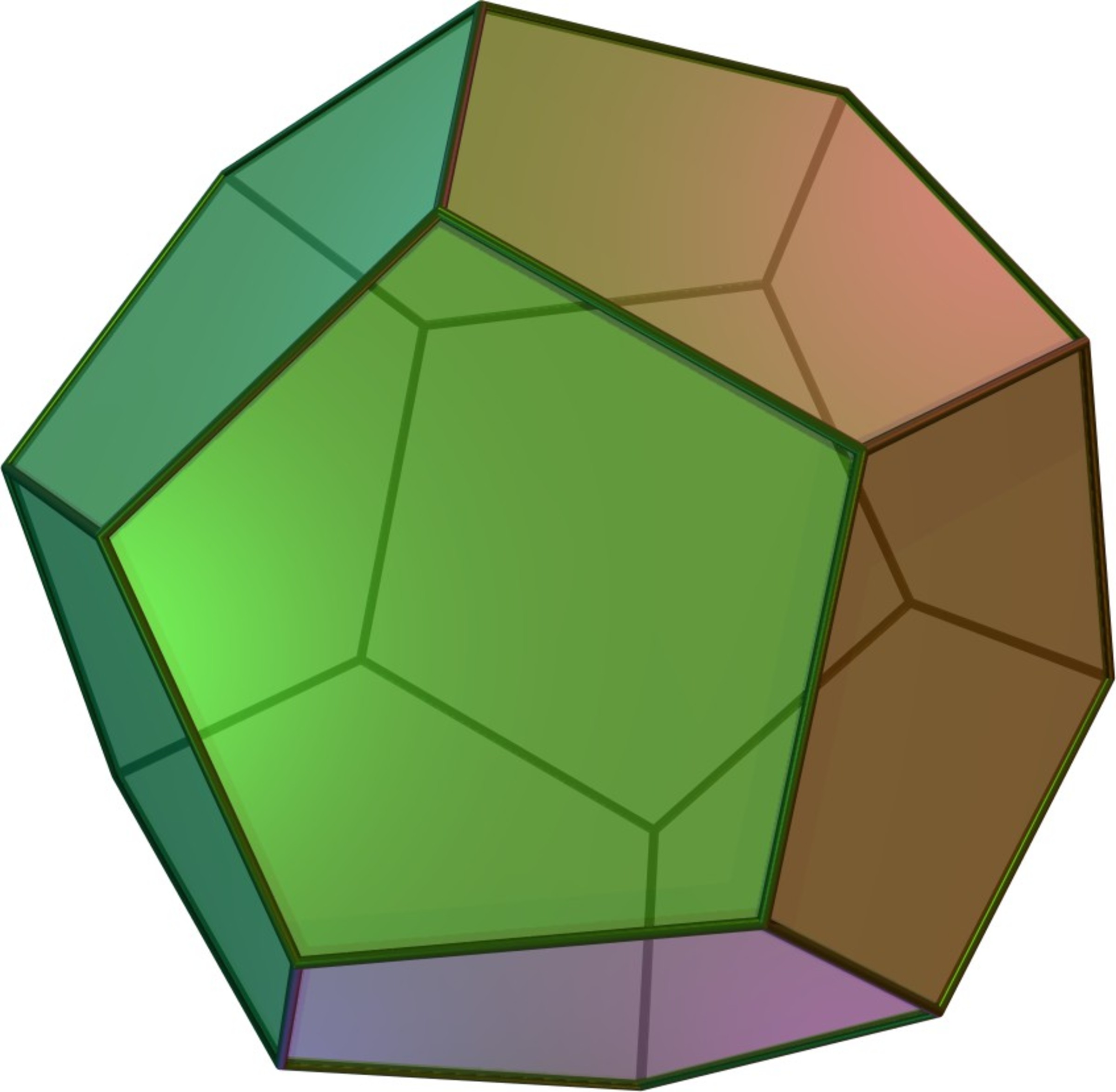Can we think out of the box?
The reason why we cannot have a platonic solid with six equal sides (regular hexagon) on each of its surface is because:
-
A) A regular hexagon has internal angles of , but (angle of the point at which three sides, one from each surface will meet) which won't work because at the shape flattens out.
-
B) It is possible, as it does not depend upon the internal angles rather depends upon the angles made by one surface to other.
-
C) It is possible, as while forming a polyhedron it neither depends upon the internal angle nor on the mutual angles between the surface.
-
D) None of the above.

Assumption: A Regular dodecahedron as shown above, has 5 equal sides (regular pentagon) on each of its surface, like wise the question asks the reason behind the impossibility of a polyhedron with six equal side on each of its surface.
This section requires Javascript.
You are seeing this because something didn't load right. We suggest you, (a) try
refreshing the page, (b) enabling javascript if it is disabled on your browser and,
finally, (c)
loading the
non-javascript version of this page
. We're sorry about the hassle.
A critical detail for A) to be the answer is that a Platonic solid is defined to be convex. Proving that intersecting regular hexagons cannot be used to form a regular non-convex solid takes a little extra work.